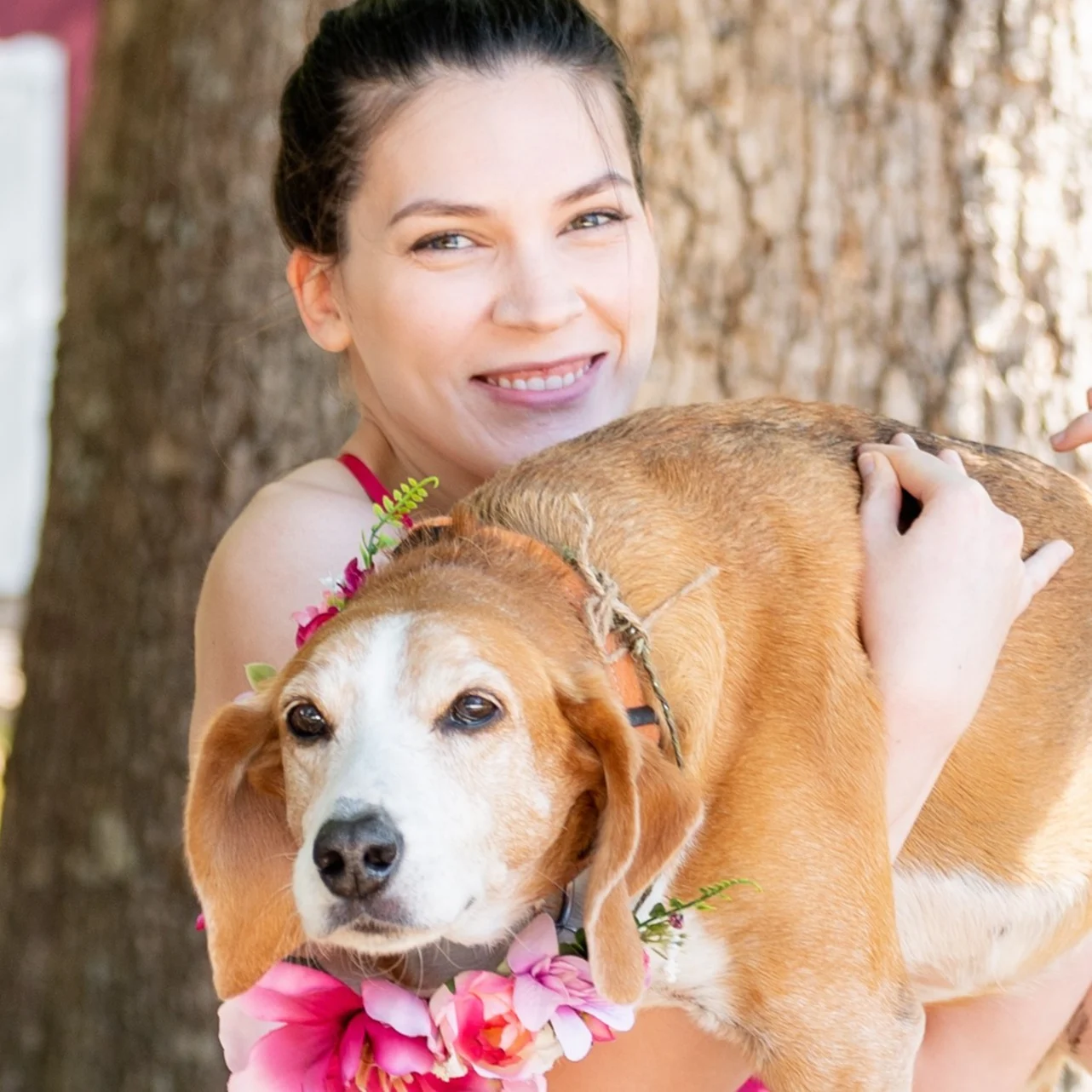Is Pet Insurance Worth It?
A closer look at why pet owners should consider dog and cat insurance to help cover the cost of both everyday healthcare needs and pet emergencies.

The number of pet owners with pet insurance has more than doubled over the past 10 years. So, why are pet owners getting pet insurance, and how does it actually work?
Rising Costs of Pet Medical Emergencies
No one wants to think about their furry friends getting sick or injured, but it is an unfortunate reality that is likely to happen at least once during a pet's lifetime. In fact, it's estimated that 1 in 3 pets will require emergency medical treatment each year.
Some of the most commonly reported emergencies for pets include ear infections, diarrhea, vomiting, and skin infections, with over 27% of households with dogs reporting an incident within the last year. While not typically as severe as other conditions, even these routine issues can significantly impact your budget. For example, hospitalization for vomiting and diarrhea can range from $600-1700 depending on the size of your pet, with other treatments like emergency surgery costing upwards of $5000. In addition, longer-term conditions such as allergies and cancer affect over 11% of households with dogs and have treatments costs well into the multi-thousand dollar range.
We know you love your pet. But, even with what we know about veterinary care costs and how often pets can have emergencies, only 16% of households with dogs in the United States have pet insurance.
Pet insurance helps pet owners worldwide ensure that their best friends are getting the necessary care they need without the fear of being unable to afford it. So, let's take a look at how pet insurance can provide assistance with vet bills and help you decide if it's right for you and your pet.
How Does Pet Insurance Actually Work?
Getting the most out of your policy depends on how well you understand your coverage, and, with terms like coinsurance, deductible, and annual limit, it’s a wonder anyone knows what they’re paying for!
Understanding the Fine Print
Most pet insurance companies have what are called annual and incident limits. So, what's the difference? Your annual limit is how much money you can be reimbursed for all submitted claims combined within a policy year. An incident limit is how much you can be reimbursed on a singular incident for the lifetime of your pet.
Imagine your pet, unfortunately, was diagnosed with cancer, and they have been fighting the disease for several years. In just one year, they accumulated $7,000 of eligible vet bills. Here's how your annual and incident limits could affect your pet:
Scenario 1
Pet has a $5,000 Incident Limit, $10,000 Annual Limit, 80% Reimbursement, Deductible Fulfilled
Here, your pet has maxed out their $5,000 Incident Limit, still leaving you responsible for the entirety of the remaining $2,000. However, if their treatment continues in the following policy year, they will not receive any additional reimbursement toward their cancer treatment, because their lifetime limit for that “incident” has been met.
Scenario 2
Pet has an Unlimited Incident Limit, $10,000 Annual Limit, 80% Reimbursement, Deductible Fulfilled
Here, you can be reimbursed for 80% of your pet’s vet bills as long as costs don't exceed $10,000 for all claims reimbursed during the policy year. When your policy renews the following year, your pet can continue to be reimbursed for their treatment as the annual limit restarts, meaning your pet can get up to $10,000 back for the year, assuming no other claims were submitted.
Through AKC Pet Insurance (underwritten by Independence American Insurance Company), you don’t have to worry about a cap on your pet’s incident limit! When you choose a custom policy, your plan will come with an unlimited incident limit.
Coinsurance is one of the terms most frequently asked about by AKC Pet Insurance customers. Pet insurance is reimbursement-based, unlike the copayment model for human insurance, where you pay a portion of the bill upfront and your insurance handles the remainder. This means that you pay the total amount due to your vet at the end of a visit. After your invoice has been paid, you can submit a claim to your pet insurance company, and you will be reimbursed for eligible costs based on your chosen policy limits. The rate of reimbursement is known as your coinsurance. To make it simple, if you choose a 20% coinsurance rate, you'll be reimbursed for 80% of eligible costs. Through AKC Pet Insurance, you can get a plan that reimburses up to 90% on eligible vet bills.
Just like human insurance, pet insurance comes with a deductible. Your deductible is the annual amount of money you're responsible for paying before your pet insurance pays for an eligible claim. Once your deductible has been fulfilled, your pet insurance plan will reimburse according to your coinsurance. Here's the kicker: only eligible expenses apply towards your deductible. So, if you submit an item that is not eligible on your policy, it still won't apply to your deductible. Once your deductible has been fulfilled for the policy year, you don't have to worry about it again until your policy renews the following year.
A Cost Breakdown
To see it all in action, here's an example:
Let's say you chose a policy with a $250 deductible, 20% coinsurance, and a $10,000 annual limit. Imagine your healthy, bouncy puppy falls off the couch and breaks their leg, landing you with a $1,000 bill. Assuming you hadn't submitted any other claims during this hypothetical policy year, the first eligible $250 would apply toward your deductible, leaving you with $750. Of that remaining $750, your policy would reimburse you 80% of what is eligible on that $750. For this example, let's say all $750 is eligible; that means you would be reimbursed $600.
Is your puppy extra clumsy and back at the vet for another accident later that policy year, costing you $500? Since your deductible had been fulfilled for the year, you would get reimbursed 80% of what is eligible of that $500 bill. If all $500 is eligible, that would be $400 reimbursed!
Pro Tip! Find out when your policy year begins and ends. Policies often start the day after you activate your coverage. So, instead of a policy term running from January 1st to December 31st, your policy will be one year from the first active date of your policy.
Know What You're Paying For
Think of your pet insurance policy like you would your car insurance. You know you're a good driver. You maintain your vehicle. You slow down for speed bumps. You avoid driving in bad weather. But what happens if another car hits you, something that’s totally out of your control? That's when your car insurance kicks in. Like car insurance, most pet insurance policies are in place to help with emergencies. Typically, basic pet insurance policies don't help with things like vaccines or check-ups, just like car insurance doesn't help with your oil changes. However, that doesn't mean routine and preventable care are never eligible! There are a variety of upgrades that can expand your coverage to include partial reimbursement for wellness costs.
To keep insurance premiums low, pet insurance policies often exclude certain conditions. Through AKC Pet Insurance, all policies are exclusion policies, meaning all ineligible conditions will be clearly listed in your terms. This means you'll never have to wonder if your pet's accident or illness is covered.
AKC Pet Insurance also offers what are called "riders," which are add-ons or upgrades to a policy that expand coverage to include typically excluded conditions or fees. These add-ons can provide reimbursement for physical exams, certain hereditary conditions, or even alternative therapies for your pet!
Now that we know all the lingo, what does it look like in practice? Here's a look at an actual claim for a big puppy whose curiosity led to a big bill. With an unlimited incident limit, $250 deductible, 20% coinsurance, a $20,000 annual limit, and all riders added to their policy, this is what their final reimbursement looked like after deductible and coinsurance were applied to all eligible charges.
The Verdict
Though we can budget and prepare for a pet health emergency, we can't always predict how severe or expensive it might be. Pet insurance helps you to budget for pet care each month, so you don't need to worry about the what-ifs. Policies offered through AKC Pet Insurance are entirely customizable, so you can choose the type of coverage you want and set your own policy limits. So, your monthly or annual premium varies based on the policy you create.

Every Dog and Cat Deserves the Pet Insurance of Champions
Get prize-winning care for your pets.

As an avid fan of all things that meow or bark, Jodie uses her expertise in human and animal health to have a positive impact on the well-being of pets and their owners. Jodie lives in Durham, NC with her cat, "Noodle", and two dogs, "Lilly" and "Clementine".
READ MORE ARTICLES

